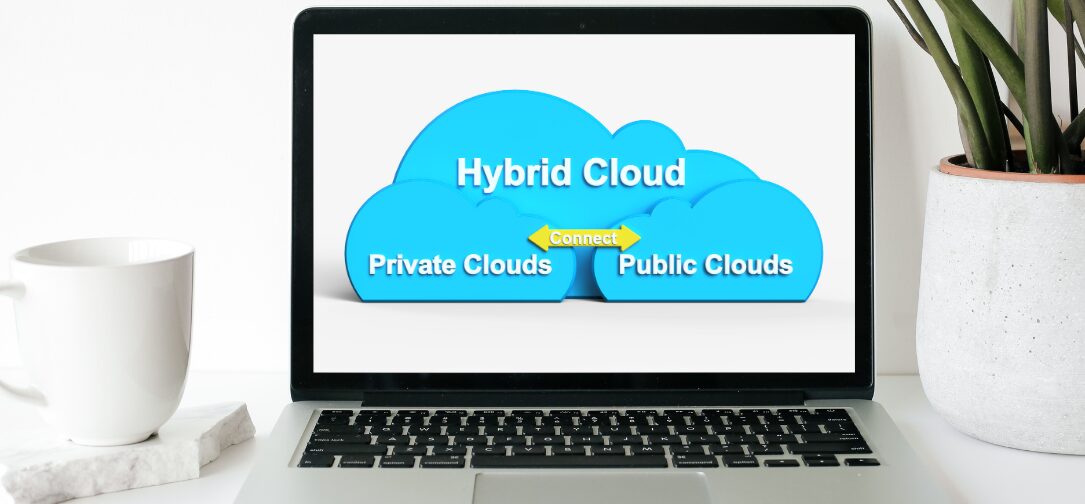When “moving to the cloud” became the big IT buzzword a few years back, many assumed it meant pulling the plug on data centers for good. Fast forward to today, and it’s clear that reality had other plans. Most enterprises aren’t living in a one-cloud world—they’re stitching together on-premises systems, private clouds, and multiple public cloud providers. Why? To grab the best pricing, performance, and features from each.
And honestly, that’s smart. But here’s the catch: hybrid and multi-cloud setups—while powerful—are not easy to manage. CIOs walk into cloud projects thinking it’s a one-and-done migration. They only find themselves wrestling with runaway costs, gaping security holes, and compliance audits that feel like nightmares. Cloud adoption is a journey for which you need a map.
Hybrid or Multi-Cloud? Here’s How to Tell Them Apart
Let’s make it easy to understand:
- Hybrid Cloud is like living in two homes. You keep your “valuables” (sensitive workloads) in one secure house—your on-premises data center or private cloud—while using another, more flexible place (a public cloud) for everything else.
- Multi-Cloud is more like having memberships at different clubs. You work with AWS for one thing, Azure for another, maybe Google Cloud for analytics. Each serves a purpose, and you pick the best of each world.
Both models fall under Infrastructure Management Services, but they serve different purposes. Hybrid gives you control. Multi-cloud gives you freedom. The art lies in making them complement each other—without spiraling into chaos.
Why Are Businesses Doing This?
If you sit down with IT leaders, the reasons for adopting Cloud Infrastructure Solutions come up fast:
- Resilience: Operations don’t grind to a halt, even if one provider fails.
- Flexibility: Workloads land where they’ll perform best.
- Cost savings: No single provider holds all the cards.
- Compliance: Keep critical data where the law says it must stay.
- Scalability: Rapidly handle traffic spikes without new hardware.
5 Strategies for Managing Multi and Hybrid-Cloud (That Actually Work)
Here’s the reality: hybrid and multi-cloud aren’t set-and-forget environments. They demand structure. After years of working with clients, these are the five strategies I’ve seen actually make a difference:
1) Don’t Skip Governance
Assume governance as the rules of the road. Without them, it’s a free-for-all—and eventually, there’s a crash. So, set clear policies for security, cost tracking, and compliance across every platform.
2) Make Your Systems Talk to Each Other
One of the biggest mistakes is treating each cloud like its own island. Use APIs, containers, and microservices so workloads can move fluidly. Integration isn’t just helpful but mission-critical.
3) Lock Down Security Everywhere
Cloud sprawl creates blind spots, and those blind spots invite trouble. Go all in on Zero Trust, tighten identity management, and bring in AI in Cloud and Infrastructure Services for real-time detection. It’s better to overprepare than to plug holes after an incident.
4) Automate (Seriously, Automate Everything You Can)
Manual management of hybrid/multi-cloud setups will burn out your IT team fast. Automate provisioning, scaling, and monitoring—and don’t ignore Artificial Intelligence. It’s a game changer for spotting inefficiencies before they spiral into costly problems.
5) Invest in Your People
This technology moves fast. If your team isn’t growing with it, you’re falling behind. Build ongoing training into your IT Infrastructure Management Services plan. A skilled, informed team is your best defense against chaos.
Hybrid and multi-cloud aren’t going anywhere. They’re becoming the new normal. But here’s the truth: they’ll drain your budget and leave gaps in your security posture, without a plan.
Pairing Cloud Infrastructure Solutions with strong governance, smart automation, and a well-trained team turns these complex environments into real engines for growth.
For more information visit https://www.yash.com/



































